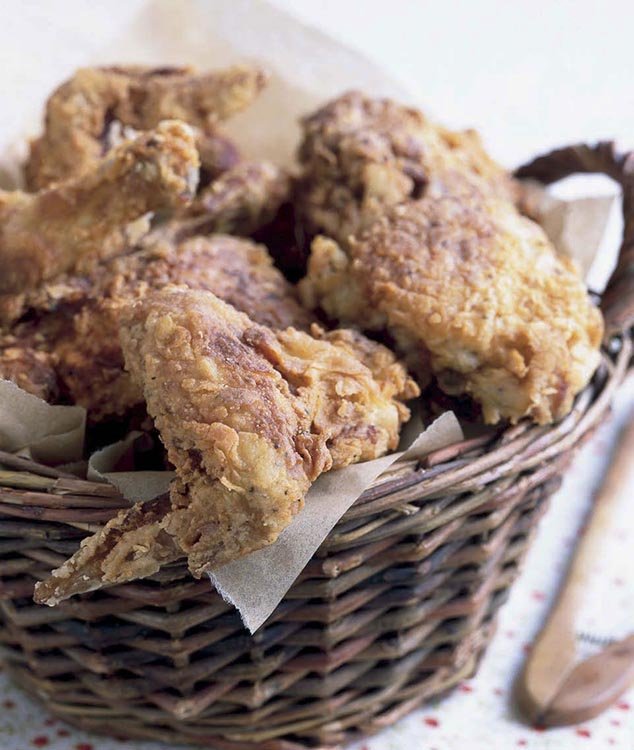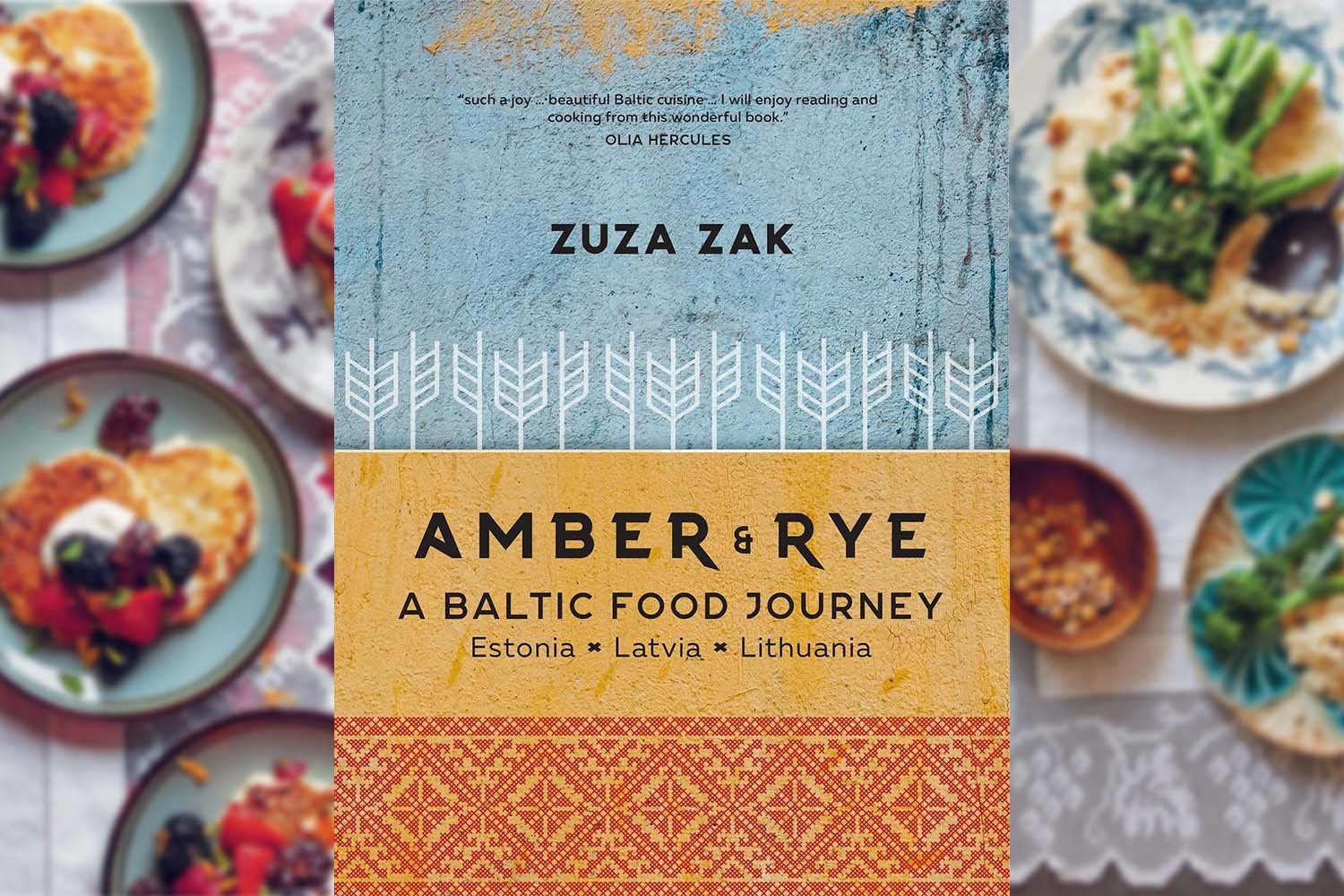Southern US cooking
We caught up with Kevin Mitchell and David S Shields, authors of Taste the State (newly added to ckbk) to hear more about he history and significance of the ingredients and dishes at the heart of the cooking of South Carolina, and to discuss the food culture in the Southern US more generally.
The Cheese Biscuit Queen Tells All was also recently added to our collection. ckbk meets its author, another South Carolinan, Mary Martha Greene, who as a lobbyist, has always used food as way of connecting with people during her 45-year career at the Statehouse.
Through these author’s reflections, taste the richness of ckbk’s Southern US library and the wealth of southern and soul food available on ckbk with its unique mixture of native American, African and European influences.
“Southern food, soul food, gullah cuisine, whatever you want to call it. It’s not going anywhere.”
Soul food
Taste the State author Kevin Mitchell was the first African-American chef instructor at the Culinary Institute of Charleston in South Carolina. After moving to Charleston he became fascinated by the food that came out of the Gullah culture (that is food cooked by African Americans living in the Lowcountry region of Georgia, Florida, South Carolina, and North Carolina). Inspired by an encounter with Professor David S Shields, he went onto read Southern Studies at the University of Mississippi.
Mitchell calls Gullah cuisine, "a mixing of African African-American ingredients with African African-American cooking techniques” and the food of those "who were direct descendants of those people that were brought to America from the western part of Africa. That's kind of the beauty of the cuisine in that it honors where it comes from in Africa."
In 2014, Mitchell was approached by Shields to recreate a feast that was held Charleston in 1865 by a formerly enslaved person, Nat Fuller, who was one of the great Black caterers in Charleston during the 1800s: "That dinner was meant to celebrate equality and reconciliation, where, of course, Blacks and whites broke bread in the same room at the same time."
Mitchell and Shield’s Taste the State explores the history and traditions of South Carolina’s culinary practices, ingredients and recipes, celebrating the contribution of Native Americans, Gullah culture and European influences.
Photograph of a Charleston groundnut cake seller by George N. Bernard, 1874, from Taste the State: “For 150 years, from 1800 to 1950, Charleston had a signature candy, the groundnut cake. It was a beloved dish of the city, sold by African American women on city street corners.”
Shields explained to ckbk how southern food is distinct from American food: "pork not beef is the focal protein; corn not wheat is the focal grain; there is a penchant for frying foods rather than boiling or roasting them. We have in the South a pantry of locally grown distinctive ingredients: okra, field peas, benne (landrace sesame), peanuts, sugar cane. The fritter matters more than the dumpling. The biscuit matters more than the muffin. Cornbread matters more than the baguette or the sourdough loaf. South Carolina food is distinctive because rice, not corn, is the central grain.”
The glory
For James Villas in The Glory of Southern Cooking, the food of the southern end of the US “only by the sheer number and variety of its dishes developed over the centuries, can claim to have created and codified a regional cuisine that is as readily identifiable as, indeed, those of France, Italy, and even China.”
The book provides recipes for Perfect Southern Fried Chicken, Candied Sweet Potatoes and Cajun Red Beans and Rice, and explores the influences on cuisine across the South: “The robust country style of cookery of western Louisiana that makes heavy use of animal fats, dark roux, and spices” (Cajun cooking) and “the complex, sophisticated cooking style of New Orleans derived from French, Italian, Caribbean, and African traditions, with an emphasis on butter and cream” (Creole cooking), among other styles.
It is not easy to sum up Southern cooking with its blend of different cultural influences. But we still asked Mary Martha Green to try: “To me, Southern cooking is using the best of the ingredients available to you – seafood from the ocean, creeks and rivers, grits and grains locally grown and milled, vegetables from your own garden or a nearby farm stand – and cooking them in traditional ways while adding your own twist, or that of your family.”
The stories
The Cheese Biscuit Queen Tells All is packed with author Mary Martha Greene’s family anecdotes that bring its classic Southern dishes to life. The book takes its name from Greene's Aunt Mimi’s legendary cheese biscuits. Another favorite is Miss Kitty’s Lemon Pound Cake.
Greene says: "If you’re coming to my house in Beaufort – my grandmother’s house that I inherited and now feel like I am the keeper of her nurturing legacy – you’re probably going to get crab cakes, red rice, creamed corn and fried okra for dinner, and lemon pound cake with homemade peach ice cream for dessert. Or in the winter a big bowl of gumbo over Carolina Gold Rice."
She told ckbk how, while working as a government relations consultant, she would make cookies to bring to the lobby to share: "I’d entertain folks in my home with fish fries and a big 12th night party that was sort of the kickoff of the legislative session.”
Bill Neal’s Southern Cooking: Bill Neal was a chef, restaurateur, writer, and mentor to many Southern home and professional cooks.
Gullah Home Cooking the Daufuskie Way by Sallie Ann Robinson (“one of the Queens of Gullah cooking" says Mary Martha Greene.)
Kevin Mitchell also shared with us the importance of his grandmother's legacy in one recipe in particular, Black-eyed Peas. Mitchell grew up in a single parent home, and as a child would go to his grandmother's house while his mother worked. From the age of six, he was learning how to cook rice with her.
His Black-eyed Peas are an ode to Grandmother Doris. The recipe is "not the typical black-eyed pea recipe where the peas are cooked in a smoked pork product and steamed down for a very long time. This recipe has two important meanings for Mitchell: First the ingredient itself, black-eyed peas were shipped on slave ships, “they were field peas, peas that were cultivated by many enslaved African African-Americans years ago”, and this dish was “one of the first things that I learned how to cook from my grandmother”.
As child Mitchell questioned staying in the kitchen with his grandmother: “I didn't understand initially. Why can't I go outside and play like the rest of my brothers? And I would ask her, and she sat me down and basically told me that, you know, one day she wasn't going to be here to cook my meals and show me these things. She saw something in me that really led me into this path.”
The cooks and books
So far there are fourteen books on ckbk’s southern US bookshelf, covering the breadth of styles across the American south. Bill Neal’s Southern Cooking explores how recipes such as Hushpuppies, Buttermilk Pie, and Peanut Soup made their way into the American tradition. Sadly Neal died at the age of just 41, but the title is a landmark of the region's cuisine.
Of the collection, Cheese Biscuit Queen Mary Martha Greene says "Wow, you’ve got some great books there". Two particularly stand out for her: ”John Martin Taylor really put South Carolina food on the map with his “Hoppin’ John” cookbook store in downtown Charleston in the mid 1980s, He’s got a new book [Charleston to Phnom Penn] – sort of a memoir of his career – coming out in December from my publisher, USC Press." Shields adds that Taylor has been a “long time friend and ally" to him.
Greene is also a fan of the Gullah cooking of Sallie Ann Robinson, "one of the Queens of Gullah cooking". Robinson lives on Daufuskie Island, near Green's hometown of Beaufort, South Carolina. They have spent time together touring the island, and Greene has all her cookbooks.
Shields adds "every one of the books listed has been an influence, although I have not studied Southern Cakes as deeply as I should have!" Other key authors of southern cuisine include Nathalie Dupree, Jessica B. Harris, Todd Richards, Carla Hall, and also Mrs. Washington’s The Unrivalled Cookbook of 1885.
The ingredients
There are far too many ingredients to mention, but some of those explored in Taste the State and The Glory of Southern Cooking include blackberries, boiled peanuts, catfish, collard greens, okra, peaches, oranges, oysters, buster crabs, pecans, persimmon, conch (whelks), shrimp, squab, pumpkins, soft-shell crabs (‘softies’), sweetcorn, zucchini (courgette), sweet potato, tanya root and watermelon. In Tom Fitzmorris's New Orleans Food, we discover why seafood is so adored in South Louisiana: “With good reason: We have plenty of it, and its quality is world-class.” Shrimp and Grits is so often associated with the South Carolina area, and to Southern food in general.
Taste the State describes how butterbeans were "first known by settlers as a sieva, (pronounced “sivvy”) bean, after the Sewee Indians of eastern South Carolina”. They were also known as the “Carolina bean”. The term butterbean caught on in the 1860s because of the bean’s buttery consistency when cooked. Another ingredient of note is Carolina Gold rice. The book describes it as "the most famous culinary ingredient ever produced in South Carolina" and it is used in Chicken Bog, Pilau (or Perloo), Rice Bread and Rice Waffles among other dishes.
Sheilds is Chairman of the board of the Carolina Gold Rice Foundation. He told ckbk how the foundation "has sought to revive the plants—grains and vegetables—that characterized classic southeastern cookery.
“We began with Carolina Gold Rice 15 years ago and have had a hand in recovering 40 some plants that provided the base flavors of traditional cookery". These heritage varieties include Purple Ribbon Sugar Cane, Benne, Carolina African Runner Peanut, and Purple Straw Wheat.
The recipes
Caroline Gold Rice's starch properties means that it gives a risotto-type effect, such as in Chicken Bog. Mitchell and Shields write how this curious name came about because “it appears that the chicken is bogged down by the rice, a texture that also recalls the bogs of the Lowcountry.”
Another famed Southern rice dish is the Jambalaya, what James Villas calls "possibly the most famous of all Louisiana Cajun-Creole creations". Try The Picayune's Creole Cook Book's Creole Jambalaya, or even Keith Floyd's recipe take on Jambalaya.
Frogmore Stew is another favorite, named after a village near Beautfort, South Carolina, and made with smoked sausage, new potatoes, shrimp, and corn. Use any leftover Frogmore stew to make Mary Martha Greene’s party dip. Other typical Southern treats include Hoppin’ John (black-eyed peas and pork traditionally eaten on New Year's day); corn bread (maize was far easier to grow than wheat throughout the summer); pot likker (the liquid left after cooking collard greens); and She-crab Soup. And we haven’t even touched on barbecue culture.
Kevin Mitchell beautifully sums up the appeal of Gullah cuisine and Southern US cooking in general: “It's one of the truest forms of American cuisine, because American cuisine to me sometimes can be a mishmash. Southern food, soul food, gullah cuisine, whatever you want to call it. It’s not going anywhere.”











